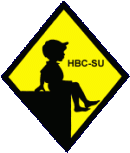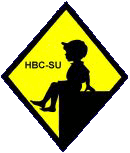
Regulations on the traveling uniform varied from school to school. This means coming and going to school. This primarily affected day children. Most schools with uniforms wanted to put their best face forward and had definite rules on how the boys should be dressed in public when coming to and going from school. This was also the case when taking school trips. The actual traveling uniform of course depended somewhat on the type of school. This was especially true of private schools. State primary schools, even those with uniforms, usully did not have blazers. Many other schools did have blazers. At some schools boys would come to schools in their blazers, but just wear their jumpers while in class or shirts in the warm weather. This included the boarding schools with day boys. The boarders often did not wear their blazers much, only on Sunday and other special days. Most schools required the boys to dress up in their blazers when taking school trips or for the boarders when when traveling at the beginning and end of term. Caps were also required although by the 1980s they had been dropped at many schools.
Regulations on the traveling uniform varied from school to school. Each school had their own regulations. The general pattern, however, was similar although the approaches have changed over time. Until recently children were expercted to dress up for school trips. Many schools now take a more casual approach.
We mean by traveling uniform coming and going to school. This primarily affected day children. Most schools also required the boys to dress up when taking school trips suvh as field trips. This also was usually the rule for the boarders when traveling at the beginning and end of term. There were also trips to other schools for games (sports) ficxtures. Most schools with uniforms wanted to put their best face forward and had definite rules on how the boys should be dressed in public when coming to and going from school. Dressing up usually mean weaing their blazrts and ties. At Scottish schools it also sometimes meant wearing kilts. Caps were also required although by the 1980s they had been dropped at many schools.
The actual traveling uniform of course depended somewhat on the type of school. This was especially true of private schools. State primary schools, even those with uniforms, usully did not have blazers.
Many other schools did have blazers. At many schools boys would come to schools in their blazers, but just wear their jumpers while in class or shirts in the warm weather. This included the boarding schools with day boys. The boarders often did not wear their blazers much, only on Sunday and other special days.
Related Chronolgy Pages in the Boys' Historical Web Site
[Main Chronology Page]
[The 1880s]
[The 1930s]
[The 1940s]
[The 1950s]
[The 1960s]
[The 1970s]
[The 1980s]
Related Style Pages in the Boys' Historical Web Site
[Main school uniform page]
[Main country page]
[Long pants suits]
[Short pants suits]
[Socks]
[Eton suits]
[Jacket and trousers]
[Blazer
[School sandals]
Navigate the Boys' Historical Clothing Web Page
[Introduction]
[Activities]
[Biographies]
[Chronology]
[Clothing styles]
[Countries]
[Bibliographies]
[Contributions]
[FAQs]
[Glossary]
[Satellite sites]
[Tools]
[Boys' Clothing Home]
